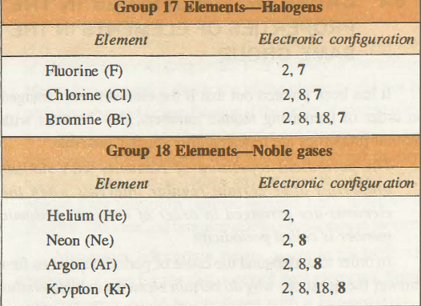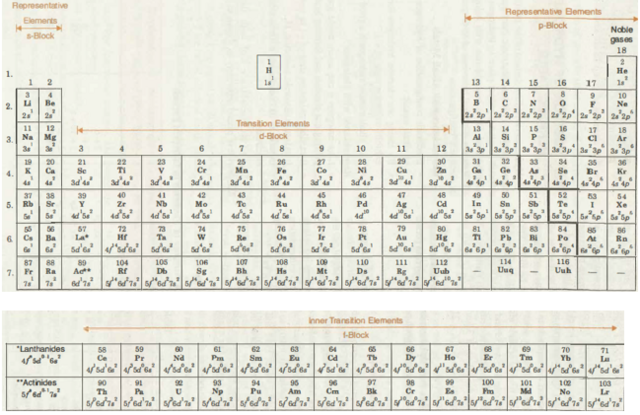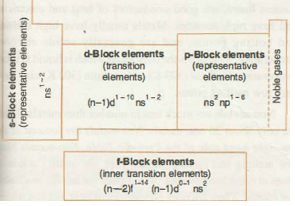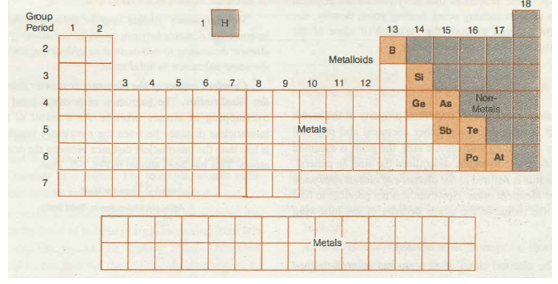PERIODICITY
THE NEED FOR CLASSIFICATION OF ELEMENTS
https://www.youtube.com/embed/P6DMEgE8CK8
Before the beginning of eighteenth century, only a very few elements were known and it was quite easy to study and remember their individual properties. In 1800, only 31 elements were known. This number of elements grew to 63 by 1865. With the discovery of large number of elements it became difficult to study individually the properties of these elements and their compounds. At this stage, the scientists felt the need of some simple methods to facilitate the study of the properties of various elements and their compounds. After numerous attempts the scientists were ultimately successful in arranging the elements in such a way so that similar elements were grouped together and different elements were separated.
The arrangement of elements in such a way that the similar elements fall within same vertical group and the dissimilar elements ate separated, is known as classification of elements.
MENDELEEV’S PERIODIC TABLE
Attempts to find regularities among the elements led the Russian Scientist, Dmitri I. Mendeleev to put forward a scheme of classification of elements in 1869. He gave a periodic law known after his name as Mendeleev’s periodic law. This law states that: The properties of elements are a periodic function of their atomic weights.
It means that when the elements are arranged in order of increasing atomic weights, the elements with similar properties recur after regular intervals. On the basis of this periodic law, Mendeleev constructed a periodic table in such a way that the elements were arranged horizontally in the order of their increasing atomic weights. However, he also kept in mind the similarities in the chemical properties of the elements. The main criterion of the judgment of similarities in the properties· was valency of the elements. Mendeleev observed that some of the elements did not fit in with his scheme of classification if the order of atomic weights was strictly followed. He ignored the order of atomic weights and placed the elements with similar chemical properties together. For example, iodine having atomic weight 127 was placed after tellurium (atomic weight 128), together with fluorine, chlorine and bromine due to similarities in properties.
Mendeleev left certain vacant places in his table which provided a clue for the discovery of new elements. Some of the properties could be predicted with a fair accuracy. For example, both gallium and germanium were not discovered at the time when Mendeleev proposed his periodic table. Mendeleev named these elements as Eka-Aluminium and Eka-Silicon respectively. Later on, when these elements were discovered, Mendeleev’s prediction proved remarkably correct. Some of the properties predicted by Mendeleev for these elements and those found experimentally.
MODERN PERIODIC LAW
In 1913, the English Physicist Henry Moseley studied the X-ray spectra of many elements. He observed that a plot of JV (where vis the frequency of the X-rays emitted) against atomic number (Z) gave a straight line and not the plot of JV against atomic weight. He proposed that atomic number is a more fundamental property of an element than its atomic weight. Therefore, the physical and chemical properties of the elements are determined by their atomic numbers instead of their atomic weights. This observation led to the development of modem periodic law. The modern periodic law states that:
The physical and chemical properties of the elements are the periodic function of their atomic numbers. It means that if the elements are arranged in order of increasing atomic numbers, the elements with similar properties recur after regular intervals.
PHYSICAL AND CHEMICAL PROPERTIES OF SOME ELEMENTS
Electronic configuration, physical properties and chemical properties are used to classify elements into various groups. The elements in a vertical column have largely similar properties which show regular gradation with increase in atomic number. The elements in a horizontal row show relatively sharp change in physical and chemical properties.
For example, some physical and chemical properties of alkali metals (Na, K), alkaline earth metals (Mg, Ca) and halogens (F2, Cl2, Br2 and lz) are listed below:
- Sodium and potassium are soft metals. Their hardness – decreases with-increase in atomic number.
- They have low melting points which decreases with increase in atomic number.
- They react with water liberating hydrogen gas and form soluble metal hydroxide
2Na (s) + H2O(l) – 2NaOH (aq) + H2 (g)
2K (s) + H2O (l) – 2KOH (aq) + H2 (g)
Comparison of the Properties of Eka-aluminium and Eka-silicon as Predicted by Mendeleev with those Observed Experimentally for Gallium and Germanium

Reactivity increases with increase in atomic number. The reaction of water with potassium is more vigorous than with sodium.
Caution: Reaction of alkali metals with water is very violent.
- Both Na and K have one electron in their outermost shell.
- They exhibit oxidation state of + 1
- They are strong reducing agents.
- Magnesium and Calcium have two electrons in their outermost shells.
- They are harder than alkali metals and have higher melting points.
- They are less reactive with water than alkali metals. Magnesium reacts only with boiling water.
- Mg and Ca have two electrons in the outermost shell.
- They exhibit oxidation state of +2
- Chlorine and bromine are non-metals. They have very low melting and boiling points.
- Chlorine is a gas whereas bromine is a liquid.
- They react with water slowly in the presence of sunlight.
2Cl2 + 2H2O —-7 4HCl + O2
2Br2 + 2H2 O —7 4HBr + O2
Cl2 is more reactive than Br2.
- They have seven electrons in their outermost shell.
- They exhibit oxidation state of -1
- They are strong oxidizing agents.
By studying physical and chemical properties of different elements, the elements have been classified into various groups or families.
For example, alkali metals, alkaline earth metals; halogens, noble gases, etc.
Many new forms of periodic table have been proposed in recent times with modem periodic law as guiding principle, but the general plan of the table remained the same as proposed by Mendeleev. The most commonly known periodic table is the long form of the periodic table. Before discussing the general plan of the long form periodic table, let us look into the basic cause of periodic repetition of properties.
CAUSE OF SIMILARITIES IN THE PROPERTIES OF ELEMENTS IN THE SAME GROUP
It has been pointed out that if the elements are arranged in order of increasing atomic numbers, the elements with similar properties are repeated after regular intervals.
The periodical repetition of elements with similar properties after certain regular intervals when the elements are arranged in order of increasing atomic number is called periodicity.
In order to understand the cause of periodicity, let us first answer the question; why do certain elements exhibit similar properties?
From the knowledge of atomic structure it may be recalled that atom has a small positively charged nucleus with electrons distributed around it. The atomic nucleus does not undergo any change during the ordinary chemical reactions. Thus, it may be assumed that the physical and chemical properties of the elements must be related to the arrangement of electrons in their atoms. Since electrons present in the inner shells do not take part in chemical combination, it must be the electrons in the outermost shell which control the properties of the atoms. Thus, if the arrangement of electrons in the outermost shell (valence shell) of the atoms is similar, their properties will also be similar. For example, the electronic configurations of alkali metal as given in Table below show the presence of one electron in their valence shells.
Electronic Configurations of Some Groups


Similar behaviour of alkali metals is attributed to the similar valence shell configuration of their atoms. For example, all alkali metals react with water and liberate hydrogen gas.
2Li + 2H2 O- 2LiOH + H2
2Na + 2H2O- 2NaOH + H2
2K + 2H2 O-2KOH + H2
Similarly, if we examine the electronic configurations of other elements, we shall find that there is a repetition of the similar valence shell configuration after certain regular intervals with the regular increase of atomic number. Thus, it can be concluded that the periodic repetition of properties is due to the recurrence of similar valence shell configurations after certain regular intervals.
Thus, all the elements in a group have similar valence shell electronic configuration. The similar chemical nature of elements in a group is due to similar electron structures of their atoms. The electron structures of the first 20 elements are given in Table 6.3.
Electronic Configurations of the First 20 Elements in the Periodic Table

ELECTRONIC CONFIGURATION AND THE POSITION OF ELEMENTS IN THE PERIODIC TABLE-The Long Form of Periodic Table
The long form of the periodic table is an improved form of the periodic table which is based upon modern periodic law. The long form of periodic table is given on page 67. Let us now, study the structural features of the periodic table.
DESCRIPTION OF PERIODS
A horizontal row of a periodic table is called a period. A period consists of a series of elements having same valence shell. There are seven periods in all, which are numbered as 1, 2, 3, 4, 5, 6 and 7.
There is a close connection between the electronic configurations of the elements and the long form of the periodic table. As pointed out earlier in Unit 5 that the principal quantum number n defines the main energy level of the electron also called main energy shell. Each period of the periodic table begins with the filling of new energy shell. In fact, the number of the period also represents the highest principal quantum number of the elements present in it. The number of elements in each period is equal to the number of electrons which can be accommodated in the orbitals belonging to that electron shell.
The first period corresponds to the filling of electrons in first energy shell (i.e., n = 1). Now this energy level has only one orbital (i.e., n =1) and, therefore, !t can accommodate two electrons. This means that there can be only two elements in the first period.
The second period starts with the electrons beginning to enter the second energy shell (n = 2). There are only four orbitals (one 2s and three 2p orbitals) to be filled which can accommodate eight electrons. Thus, second period has eight elements in it
Long Form of Periodic Table

Fig. 6.1. Long form of periodic table
The third period begins with the electrons entering the third energy shell (n = 3). It may be recalled that out of nine orbitals of this energy level (one s, three p and five d), the five 3d orbitals have higher energy than 4s orbitals. As such only four orbitals (one 3s and three 3p) corresponding ton= 3 are filled before the fourth energy level begins to be formed. Hence. there are only eight elements in the third period.
The fourth period corresponds to n = 4. It starts with the filling of 4s-orbitals. However, after the 4s but before the 4p orbitals, there are five 3d orbitals also to be filled. Thus, in all, nine orbitals (one 4s, five 3d and three 4p) have to be filled and as such there are eighteen elements in fourth period. It may be noted that the filling of 3d-orbitals starts from SC (Z = 21). The elements from SC (Z = 21) to Zn (Z = 30) are called 3d-transition series.
Similarly. we can show that there are 18 elements in the fifth period and 32 elements in the sixth period. Seventh period is still incomplete.
DESCRIPTION OF GROUP
A vertical column of the periodic table is called a group. A group consists of a series of elements having similar configuration of the outer energy shell. For example, all the group 1 elements have ns1 valence shell electronic configuration. There are eighteen vertical columns in the long form of the periodic table. According to the recommendation of the International Union of Pure and Applied Chemistry (IUPAC), these groups are numbered from 1 to 18.
It may be noted that the elements belonging to same group are said to constitute a family. For example,
• The elements of group 1 are known as alkali metals.
• The elements of group 2 are known as alkaline earth metals.
• The elements of group 17 are known as halogens.
• The elements of group 18 are known as noble gases.
POSITION OF HYDROGEN IN THE PERIODIC TABLE
Hydrogen is the first element of the periodic table having atomic number 1. It has electronic configuration ls1. It is difficult to give a proper place to hydrogen in the periodic table because of its resemblance with halogens as well as alkali metals. The dual behaviour of hydrogen is attributed to its electronic configuration.
Resemblance with Alkali Metals
• Electronic configuration of hydrogen resembles that of alkali metals.
• By losing one electron hydrogen forms H+ ion and exhibits oxidation state of + 1.
• Like alkali metals, hydrogen is a good reducing agent. Resemblance with Halogens
• Like halogens it can attain noble gas configuration gaining one electron and forming hydride ion, H-.
• It exhibits oxidation state of -1 in metal hydrides. It exists as diatomic molecule, Hz.
• In most of its compounds it forms bond by sharing of electrons.
Due to its resemblance with both alkali metals and halogens it is placed separately as shown in Fig. 6.1.
Period Principal Orbitals being Electrons to be Number of
valence filled up accommodated elements
shell(= n)
First n=1 1s 2 2
Second n=2 2s, 2p 2+6 8
Third n=3 3s,3p 2+10+6 8
Fourth n=4 4s,3d.4p 2+10+6 18
Fifth n=5 5s, 4d, 5p 2+ 10+6 18
Sixth n=6 6s. 4f, 5d, 6p 2 + 14 + 10 + 6 32
Seventh n=7 7s. 5f, 6d, 7p 2+14+10+6 32
(incomplete)
DIVISION OF PERIODIC TABLE INTO s-, p-, d- AND f-BLOCKS ON THE BASIS OF ELECTRONIC CONFIGURATIONS
The long form of periodic table can be divided into four main blocks. These are s-, p-, d- and f-blocks. The division of elements into blocks is primarily based upon their electronic configuration as shown in Fig. 6.2.

Fig. 6.2. Division of periodic table into various blocks.
s-BLOCK ELEMENTS
The elements in which the last electron enters the s-sub- shell of their outermost energy level are called s-block elements. This block is situated at extreme left of the periodic table. It contains elements of groups 1 and 2. Their general configuration is ns1-2, where n represents the outermost shell. the elements of group 1 are called alkali metals whereas the elements of group 2 are called alkaline earth· metals. are:
Some of the general characteristics of s-block elements
(i) They are soft metals. Hardness decreases with increasing atomic number.
(ii) They have low melting and boiling points.
(iii) They have low ionization energies and hence are highly electropositive.
(iv) They are very reactive metals.
(v) They show oxidation states of +1 (in case of alkali metals) or +2 (in case of alkaline earth metals).
(vi) They are good reducing agents.
(vii) The compounds of s-block elements are predominantly ionic.
p-BLOCK ELEMETS
The elements in which the last electron enters the p-subshell of their outermost energy level are called p-block elements. The ·general configuration of their outermost shell is ns2 np1-4i. The only exception is helium (l s2). Strictly, helium belongs to the s-block but its positioning in the p-block along with other group 18 elements is justified because it has completely filled valence shell ( 1 s2) and as a result, exhibits properties characteristic of other noble gases. This block is situated at the extreme right of the periodic table and contains elements of groups 13, 14, 15, 16, 17 and 18 of the periodic table. Most of these elements are non-metals, some are metalloids and a few others are heavy elements which exhibit metallic character. The non-metallic character increases as we move from left to right across a period and metallic character increases as we go down the group. Some of the general characteristics of p-block elements are:
(i) They show variable oxidation states.
(ii) They form ionic as well as covalent compounds.
(iii) They have relatively higher values of ionization energy.
(iv) Most of them are non-metals.
(v) Most of them are highly electronegative.
(vi) Most of them form acidic oxides.
d-BLOCK ELEMENTS
The elements in which the last electron enters the d-subshell of the penultimate energy level are called d-block elements. Their general valence shell configuration is (n -l)d1-10, ns1-2, where n represents the outermost energy level. d-Block contains three complete rows of ten elements in each. The fourth row is incomplete. The three rows are called first, second and third transition series. They involve the filling of 3d, 4d and 5d orbitals respectively. The d-block contains elements of groups 3 to 12 of the periodic table. The general characteristics of d-block elements are:
(i) They are hard, high melting metals.
(ii) They show variable oxidation states.
(iii) They form coloured complexes.
(iv) They form ionic as well as covalent compounds.
(v) Most of them exhibit paramagnetism.
(vi) Most of them possess catalytic properties.
(vii) They form alloys. For example, brass is an alloy of copper and zinc.
(viii) They are good conductors of heat and electricity.
f-BLOCK ELEMENTS
The elements in which the last electron enters the f –sublevel of the anti-penultimate (third to the outermost shell) shell are called f-block elements. Their general configuration is (n – 2)f1-14 (n – 1) d 0-1 , Ns2, where n represents the outermost shell. They consist of two series of elements placed at the bottom of the periodic table. The elements of first series follow lanthanum (57La) and are called lanthanoids. The elements of second series follow actinium (89Ac) and are called actinoids. Actinoid elements are radioactive. Many of them have been made only in nanogram quantities or even less by nuclear reactions. Chemistry of the actinoids is complicated and is not fully studied. The general characteristics of !-block elements are:
(i) They show variable oxidation states.
(ii) They are high melting metals.
(iii) They have high densities.
(iv) They form complexes, most of which are coloured.
( v) Most of the elements of actinoid series are radioactive.
CLASSIFICATION OF ELEM ENTS AS METALS, NON-METALS AND SEMI-MTALS
In addition to the classification of elements into s-, p-, d and f-blocks, it is possible to divide them into metals, non-metals and metalloids. More than 78% of the elements are metals. Metals are present on the left side and the centre of the periodic table.
Metals are the elements which are malleable and ductile, possess luster, are good conductors of heat and electricity and have high densities. Metals usually have high melting and boiling points, and are generally solids at room temperature. Mercury is the only metal which is liquid at room temperature. Gallium (303 K) and caesium (302 K) also have very low melting points.
Non-metals are much less in number than metals. There are only about 20 non-metals. Non-metals are located at the top right hand side of the Periodic Table. Non-metals have low melting and boiling points. They are usually solids or gases at room temperature. Non-metals are neither malleable nor ductile. They are poor conductors of heat and electricity. In a period, the non-metallic character increases as we move from left to right. In a group; the non-metallic character decreases and metallic character increases on going down a group. There is no sharp line dividing metals from non-metals. A zig-zag line separates metals from non-metals as shown in Fig. 6.3. The borderline elements such as silicon, germanium, arsenic, antimony and tellurium exhibit characteristic properties of metals as well as non-metals. These elements are called semi-metals or metalloids.

Fig. 6.3. Position of metals, non-metals and metalloids in the periodic table.
EVALUATION
1.The periodic table is an arrangement of elements in order of their
a.mass numbers b.relative molecular masses c.atomic numbers d.isotopic masses e.molecular masses.
2.State the period and the group to which the elements aluminium belongs in the periodic table.
3.State the periodic law.
4.Why is it that for chromium,the structure (Ar)4s1 3d5 is more stable than (Ar)4s2 3d4.
- A, B, C are three elements with atomic numbers, Z- 1, Z, Z + 1 respectively. B is an inert gas.
Answer the following questions:
(i) Predict the group of A and C.
(ii) Which out of the three has positive electron gain energy and why?
(iii) Which of the three has least value of ionization energy?
- The electronic configurations of some elements are given as:
(a) [Ne] 3s2 3p3 (b) [Ne] 3s2 3p4
(c) [Ne] 3s2 3r (d) [Ne] 3s2 3p63tf’ 4s1
(i) Which element will be most metallic ?
(ii) Which element will have most negative electron affinity?
(iii) Which element belongs to d-block?
(iv) Which element belongs to group 17?
(v) Out of a, b and c which will have least ionization energy?
7.Which of the following elements is diatomic?
- iron B neon C. oxygen D. sodium
8.Calcium and magnesium belong to the same group in the periodic table because both
- are metals
- form colourless salts
- have the same number of valence electrons
- form cations
- A solid substances with high melting and boiling points is likely to be a/an
- covalent compound
- dative covalent compound
- electrovalent compound
- non-metal
- Which of the following elements is a d-block element?
- calcium b. iron C. lithium D. silicon
- If X is a group III element. Its oxide would be represented as
- X3O2 B. X3O C. X2O3D. XO3
- Which of the following sets of elements have the similar electronic configuration?
(i) H, He, Be (ii) Li, Be, B
(iii) He, Ne, Ar (iv) Li, Na, K
(a) (iii) (b) (iii), (iv)
(c) (iv) (d) (ii), (iii)
- Transition metals are:
(a) found between groups 2 and 13
(b) all solids
(c) metals and semi-metals
(d) found between groups 1 and 13.
- Hydrogen can be placed along with group 17 elements because it
(i) can aquire noble gas configuration by gaining one electron.
(ii) exhibits oxidation state of+ 1.
(iii) has one electron in the outermost shell.
(iv) can exhibit oxidation state of -1.
(a) (ii) and (iii) (b) (i) and (iv)
(c) (i) (d) (iii).
- number of elements in the 5th period of the periodic table is
(a) 3 (b) 9
(c) 8 (d) 18.
- In the modern periodic table, the period indicates the value of:
(a) atomic number (b) atomic mass
(c) principal quantum number
(d) azimuthal quantum number.
- What is modem periodic law?
- What is periodicity and what is its cause?
- What is the total number of groups in. the. long form of periodic table?
- An element has atomic number 34. Deduce its period, group and block.
- Write the general outer electronic configuration of s-, p-, d and /-block elements.
- Which groups constitute d-block of the periodic table?
- In what group of the periodic table is each of the following elements found?
(i) [Ar] 3d10 4s2 (ii) [Ar] 3d10, 4s2, 4p4.
24.. Which of the following groups consists entirely of metals?
(a) 18 (b) 2
(c) 14 (d) 15.
- An element with atomic number 20 is placed in which period of the periodic table?
(a) 4 (b) 3
(c) 2 (d) 1.
(26) Moderm periodic law was proposed by ……
Read our disclaimer.
AD: Take Free online baptism course: Preachi.com 